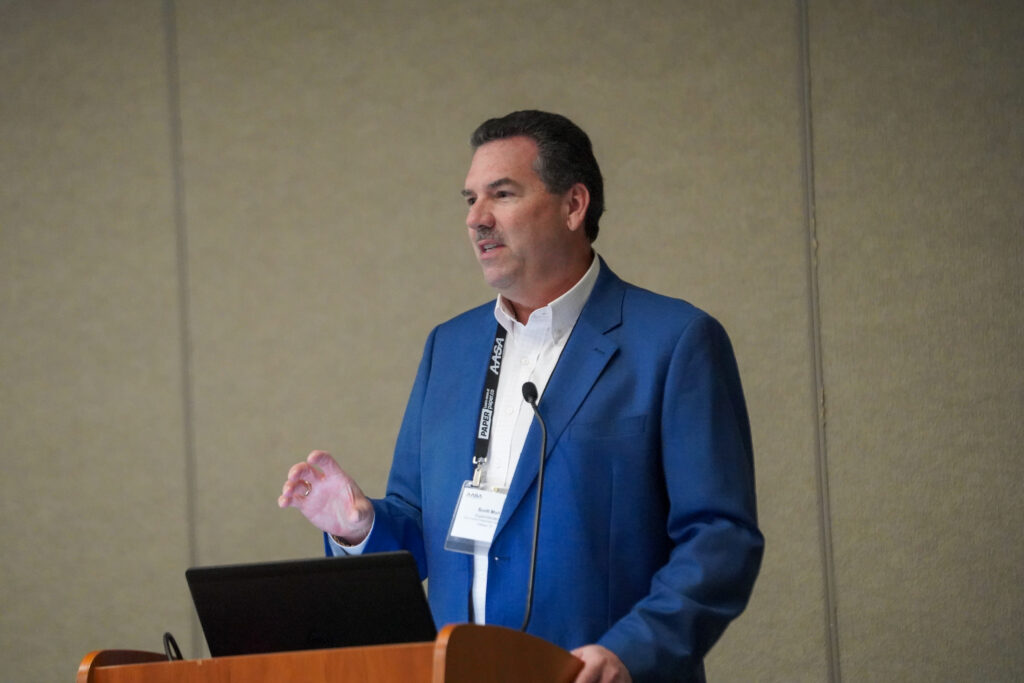When you hear the word apprenticeship, you might think of an aspiring plumber, electrician, welder or other trade. But what if there was an apprenticeship for aspiring principals and leaders in K-12 education?
That’s exactly what David Donaldson, founder of the National Center for Grow Your Own, has helped school districts create.
At AASA’s national conference on Friday, he was joined by Laurie Matzke, assistant state superintendent of the North Dakota Department of Public Schools, and Scott Muri, superintendent of Ector County Independent School District in Odessa, Texas, to discuss their success in creating registered apprenticeships for aspiring principals.
Donaldson has found that registered apprenticeships for principals help states and districts to reduce the financial burden of recruiting effective and diverse leadership. These training programs also help districts address the growing number of vacancies, while also expanding clinical experiences for principals, Donaldson said.
“Your best retention strategy is your recruitment strategy,” Donaldson said.
For Ector County schools, Donaldson’s statement rings true.
In Ector County, 70 percent of students live in poverty. On top of this, the district has had a vacancy rate of 18 percent across all positions including teachers, support staff and administrators.
As superintendent, Muri took on this challenge by developing a strategic plan for his district – one that included the creation of a principal residency program.
The program lasts a full year, and participants are paid while they are completing their program. The rigorous program follows Texas state standards, and by the end, participants have a principal certification and clinical experience under their belt.
As part of the program, the district works with local colleges and universities to help with the recruitment of residency candidates.
“Principals that have had a full year of tutelage under a master principal are proven to outperform their peers who haven’t had that experience,” Muri said. “Those are the principals we need today.”
This type of program isn’t limited to the district level, however. The North Dakota Department of Public Schools planned and implemented the first statewide principal apprenticeship program approved by the U.S. Department of Labor just last year.
North Dakota deals with recruitment and retention of leadership, especially given that most of the state’s schools are located in small, rural communities, said Matzke.
Programs like the registered apprenticeship help districts grow leaders among individuals already living and committed to these communities, but who may not have the resources to seek out a postgraduate degree on their own, she said.
While there is no funding for the program through the Department of Labor, North Dakota has been able to use part of its Title II funding for it.
This investment has proven to be worth it, as the program has helped districts in the state not only recruit and train aspiring principals, but also helped in the recruitment of other vacant leadership positions, Matzke said.
The panelists encouraged the audience to take into consideration the idea of establishing their own principal apprenticeship program back home.
“We have new opportunities to cultivate the principals of tomorrow,” Muri remarked.
(Eugenie Budnik, a senior majoring in journalism/advertising at San Diego State University, is a reporter on Conference Daily Online.)

